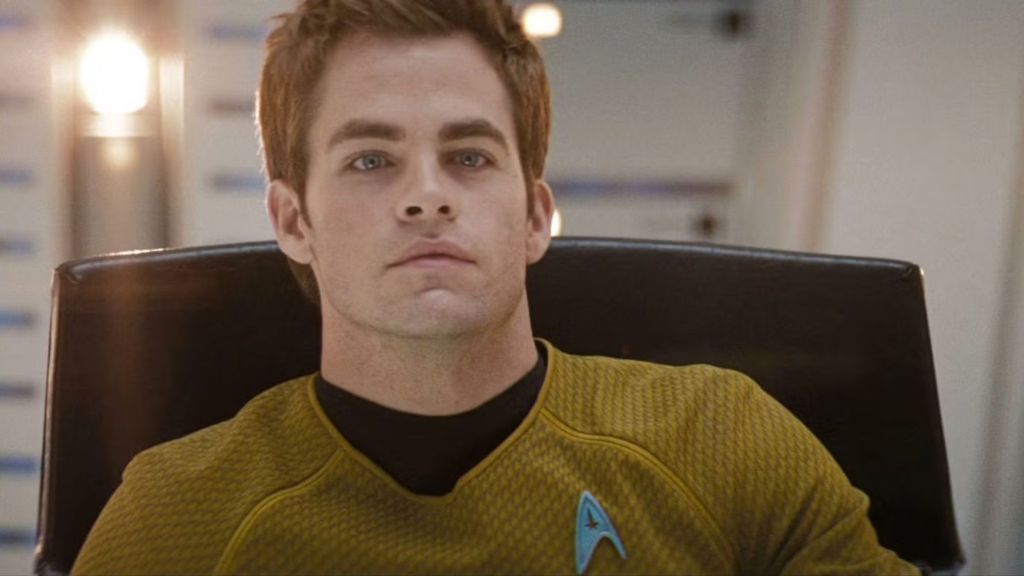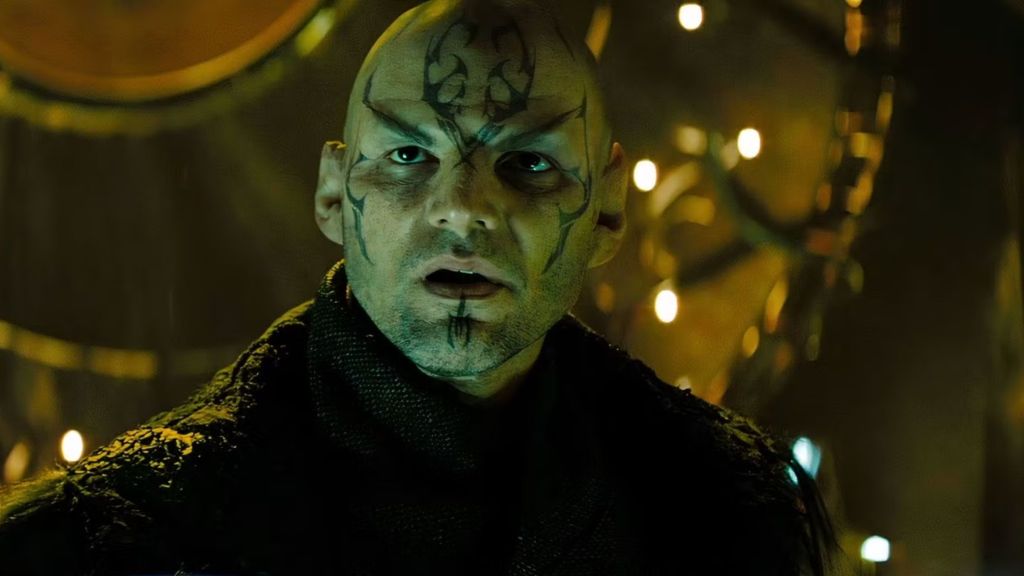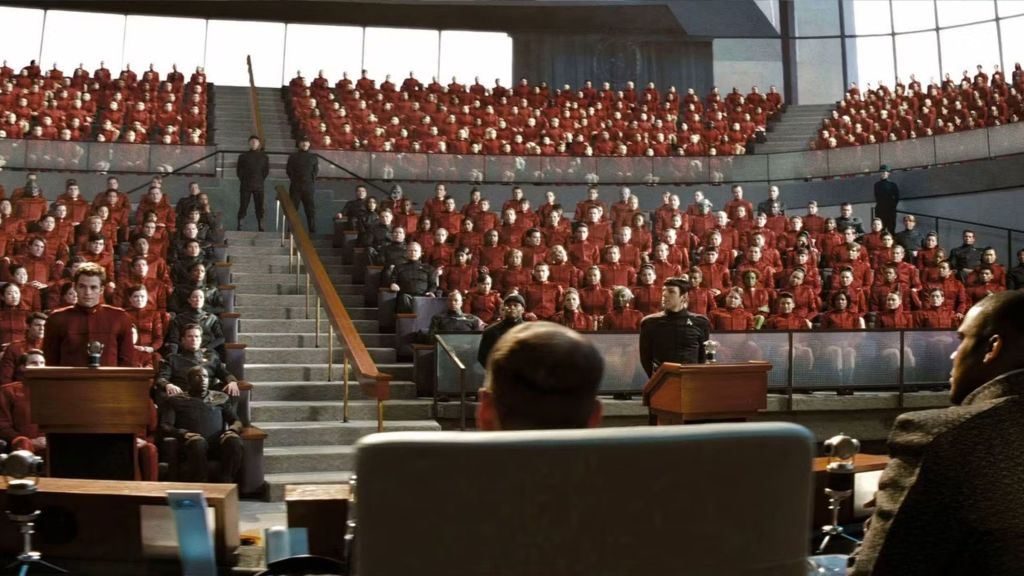Love them or hate them, the Star Trek reboot films are here to stay. It’s safe to say that these movies divided the fanbase, with some loving the fresh take on beloved classics, while other fans were upset about how many changes J.J. Abrams and team made along the way. There’s no denying that the modern remakes embraced a more action-focused mentality, but at least having them set in a different timeline makes many of the ensuing changes more palatable. That said, some things can’t be explained away with the wave of a hand, and they’re still confusing all these years later.
Videos by ComicBook.com
J.J. Abrams’ first Star Trek hit theatres in 2009, rebooting a franchise that so many sci-fi fans grew up with. Set in a different timeline, the story goes quite differently from what viewers may have expected, with a slightly different origin story for Kirk, Spock, and Uhura. This film set the tone for the next two films, both of which continued to lean heavily into the newly established action sci-fi format. On the bright side, the franchise has a whole lot of star power to back it up, and that helped bring Star Trek to an even broader audience.
1) How Kirk Climbed the Ranks So Quickly

Star Trek was a fresh start for some favorite characters, and that included James T. Kirk. The first film shows this character get pulled into Starfleet Academy by Captain Pike, but we don’t exactly get to watch him go up the ranks. More like he makes a massive leap. One could argue that it made for a compelling story, but it’s just confusing.
To start with, Kirk got on board the USS Enterprise immediately following his near-expulsion, through a loophole. He then makes his way onto the bridge, and while his argument does save lives (thank goodness), what follows doesn’t make complete sense. Captain Pike puts Spoke in charge, with Kirk the second in command. Was there really nobody else on the Bridge that Pike trusted? Sadly, we’re going to have to agree with all the arguments Spoke tried to make at this moment, as it wasn’t a rational decision fueled by careful thought. It may have worked out, but let’s be real: that’s movie magic for you.
To put it more simply, in the course of a single movie, Kirk goes from civilian to cadet and then straight to Captain! It’s a massive leap that kind of spits on all the hard work of those who came before him. The trend borderline repeats in Star Trek: Into Darkness, as Kirk gets demoted, only to become Captain again within a few minutes.
2) Since Nero Went Back In Time, Why Not Warn the Romulans?

Next, we have to talk about Captain Nero, aka the time-traveling Romulan. He’s the driving force behind this movie, after all. Nero is a fantastic-looking villain, but his motivations and plan are somewhat questionable, no offense. Following Spock’s failure to save Romulus in time (despite his best efforts, mind you), both Nero and Spock get blasted into the past. At this point, Nero had a few choices he could have made. He could have run home to warn his people of the event that would happen years from now. In doing so, give them the time they didn’t have in his timeline. He could have even aided Spock (the one from his timeline) in fixing what was broken.
Nero did neither, instead blaming the man who tried to help save his people. He blamed Spock for his failure and began targeting Starfleet, starting with USS Kelvin. The whole thing makes no sense when you stop to think about it, but then again, grief is like that sometimes.
3) What Exactly is the Red Matter, and Why Does Spock Have So Much Of It?

One of the key points in the Star Trek movie is Spock’s Red Matter, which was originally meant to help save Romulus from the supernova. However, once Nero and his crew got their hands on it, this Red Matter became a weapon capable of taking out Vulcan, and that was just a drop! Naturally, we have a few questions. Starting with – what exactly is this Red Matter? We know it can create a black hole, but how?
Second, why on Earth did Spock have so much of it? Since one drop can create a black hole (or destroy a whole planet), why would he ever want so much of it? The only thing that makes sense is that the process of creating Red Matter (whatever that is) naturally produces this much. Likewise, perhaps it is only safely stored in larger quantities? It’s still strange and largely glossed over.
4) Why Did the Starfleet Deploy So Many Cadets at Once?

Fans who watched all three Star Trek films can easily point out one common thread: mass casualties, especially among the Starfleet. Every movie put the USS Enterprise at risk, and that means everybody on board was at risk of dying. The first film went all out with this threat, as Starfleet seemingly sent out every single new cadet to respond to the Vulcan distress call. We all know how that went, with only the USS Enterprise surviving the encounter. If we stop and think about the massive number of casualties that happened here, it might make our brains freeze up.
Why did Starfleet send out so many fresh members on an unknown mission? Were they that desperate to fill in the ranks? If so, they’ve undoubtedly made that problem exponentially worse, albeit unintentionally. From what we understand, sending out so many under-trained cadets may even violate Starfleet’s protocols, which are obviously in place for a reason. Is this a sign of a larger problem? If so, the pattern of Enterprise (and a large portion of its crew) getting destroyed in each film may indicate as much.
5) Was There No Investigation into the USS Kelvin’s Destruction?

At a glance, this may seem like a small complaint, but was there no investigation into what happened to the USS Kelvin? The ship had survivors and presumably had sensors recording everything that happened, yet Nero’s ship consistently blindsides people when it shows up. To put this into perspective, if Starfleet had the records of the attack on the USS Kelvin, they had 25 years to investigate. Perhaps they also have 25 years to largely forget about the attack, as Kirk seemed to be the only one who held onto the lesson.
Given where Starfleet is at this point in time, it may be reasonable to assume that a Romulan ship wasn’t easily recognized (yet). But if that’s the case, this actually raises more questions, like how nobody reacted to the appearance of the Romulans (this was historically a major point).
If we continue to assume that Starfleet had no idea who or what attacked the USS Kelvin, then why were no new security measures put in place to prevent this from happening again? From Starfleet’s perspective, a mysterious ship popped in, utterly decimated one of their own ships, and disappeared. Is that not a major cause for concern?
6) Scotty’s New & Improved Transwarp Beaming Tech

The Star Trek reboot tried a lot of things, including introducing a new form of Transwarp Beaming Tech. It comes about when Kirk and Scotty desperately need to get back onboard the Enterprise, with Spock giving a little insight into something Scotty had figured out from his timeline. This raises a few questions. First, if Scotty had perfected the formula in his timeline, why do we never see it get used? Was there a safety concern we’re unaware of? Realistically, that would be a good reason to avoid utilizing the technology.
Second, if this is something Scotty invented in another timeline, why is Spock okay with giving it to a younger version of the character? It may seem like a small quibble, given how much the timeline is being altered by Nero, but it’s still a concern worth mentioning. Admittedly, the technology itself is incredibly impressive and powerful, which may explain why future films don’t play around with it all that much.
7) There’s No Department of Temporal Investigations?

Last, but not least, we need to address the elephant in the room. The whole premise of the Star Trek reboot is that it is a different timeline, yes? Yet there are several characters, including Nero and Spock, running around. So, where’s the Department of Temporal Investigations? From what fans have seen through years of Star Trek adventures, there are multiple organizations and individuals dedicated to preventing contamination of the timeline(s). So, where are they?
Looking back, it’s easy to see how hard Spock worked to prevent contamination on his part, but Nero clearly didn’t care. He destroyed the USS Kelvin and half a dozen other Starfleet ships, followed by the destruction of an entire planet. That seems like a pretty big contamination, no matter how one looks at it. Perhaps this timeline didn’t have a Department of Temporal Investigations yet, but the odds are good that one got formed after what Nero did.
Star Trek (2009) is available to stream on Paramount+ and Amazon Prime Video.










